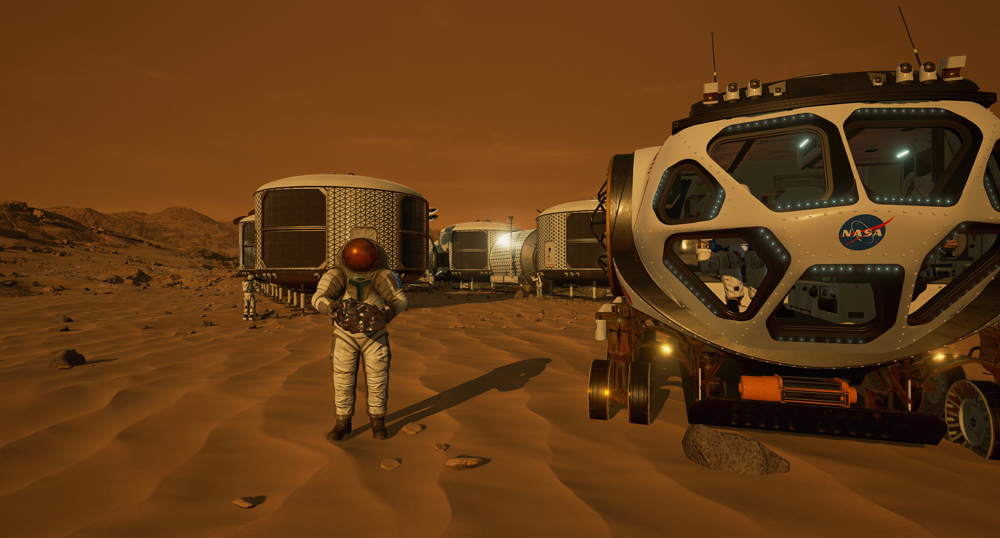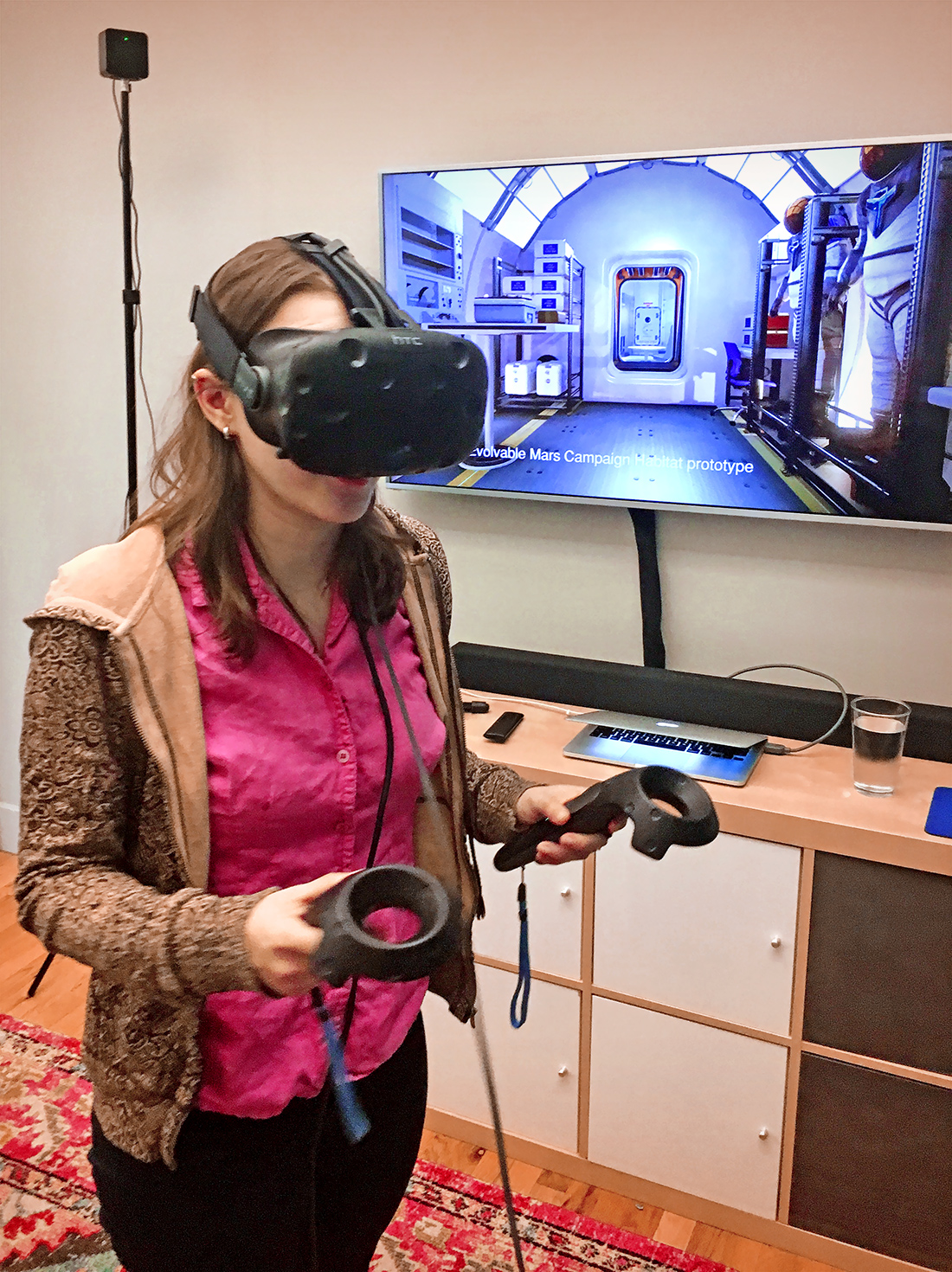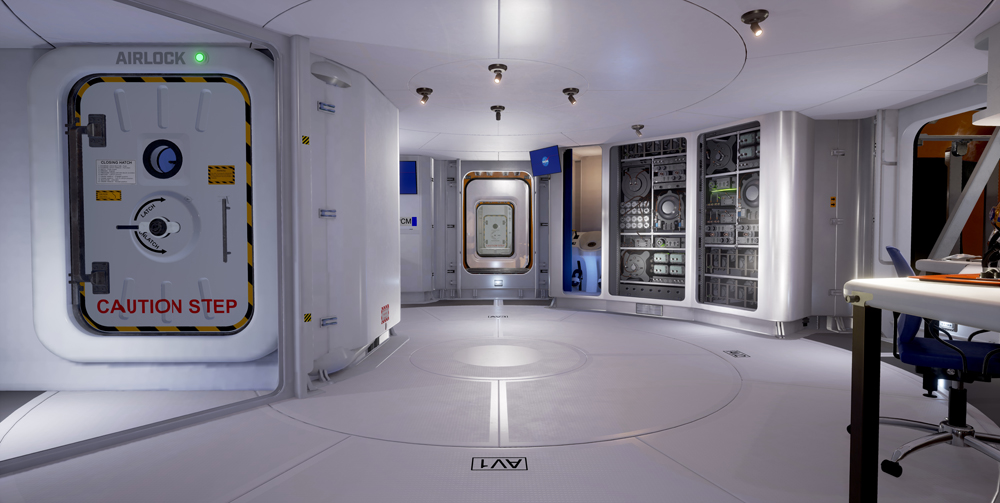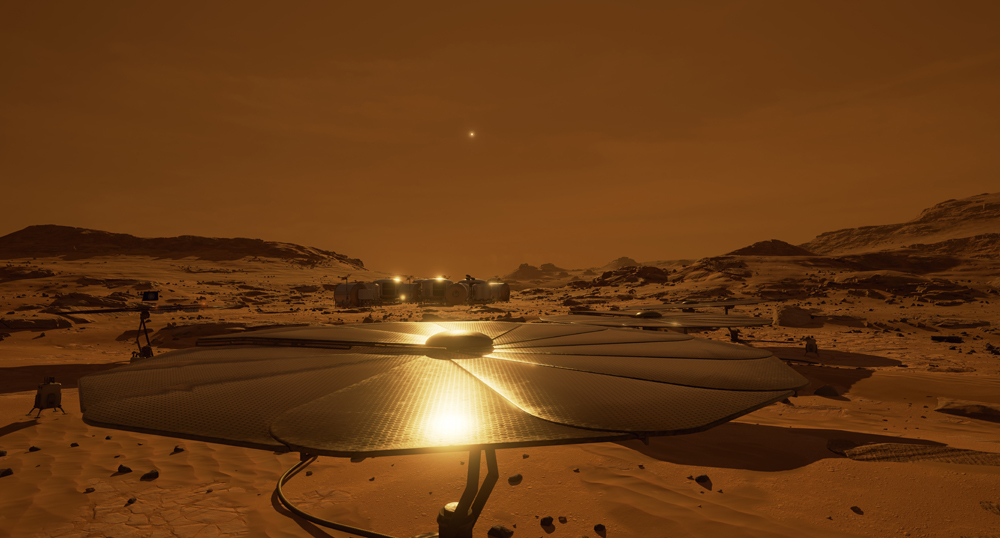Mars 2030: What It Was Like to Explore the Red Planet in Virtual Reality
In "Mars 2030," players get to land on the Red Planet, explore a realistic future habitat on the surface and dig into the history of the planet's landmarks in immersive 3D. The game is available today (July 31) for the HTC Vive, Oculus Rift and Steam PC platforms, and will soon be available for PlayStation VR.
Space.com had the chance to strap on the HTC Vive and explore the Mars simulation, which provided a fascinating and realistic — if sometimes dizzying — excursion across the planet.
"The experience itself covers about 40 square kilometers [15 square miles] of Mars Reconnaissance Orbiter data from the HiRISE imagery device, and we read through the manual to convert the raw data from the MRO to function in a real-time game engine environment," Julian Reyes, director of virtual reality/augmented reality at Fusion Media Group, told Space.com. [Red Planet VR: 'Mars 2030' in Pictures]

The members of the production company were inspired by an MIT study that looked into the feasibility of Mars One, a Netherlands-based private colonization effort. The MIT study concluded that the company's setup would be deadly and unsustainable, and the company reached out to the MIT students to get their take on what exactly would work for a stay on Mars.
"They started to provide to us several technical papers, from habitation, spacesuits, rovers, food growth and ISRU [in-situ resource utilization] capabilities," Reyes said. Then, Fusion Media brought its concept to NASA for a partnership — and built a team to reconstruct Mars' surface and a habitat, based on one developed by NASA's Langley Research Center, to reconstruct in the game-developer tool Unreal Engine.
The result is an immersive experience that is as scientifically precise as possible.

After landing on Mars flanked by two other astronauts, the player is able to move around using the Vive headset and two hand controllers — the astronaut's hands follow the player's, and can be outstretched to pick up samples or plant a flag. (Or at least try to plant a flag … it's harder than it looks at first.)
Get the Space.com Newsletter
Breaking space news, the latest updates on rocket launches, skywatching events and more!
Jumping up, the player floats down more slowly than would be expected — the move is calibrated to Mars' gravity, and it's handy for getting around in leaps and bounds.
To get around even faster, though, the player rides in the Multi-Mission Space Exploration Vehicle rover, based on an actual NASA design. According to Reyes, the team drove a Mars rover over NASA's Mars Yard at Johnson Space Center in Houston to record the precise sound it would make, using eight different microphones. The game itself is scored by the London Symphony Orchestra.
After exploring the habitat — featuring a waste-processing area, a Veggie unit with rows of greenery and a research lab, among other modules — it's time for the player to explore Mars.
The MRO data sets the game across 15 square miles (40 square km) of Mars' Mawrth Vallis, one of two finalist landing sites for the upcoming ExoMars 2020 rover. The area has a wide variety of clay and varying terrain, making it a promising spot to search for signs of past water and life.
The player can turn and pick things up at any time, and can also smoothly slide forward and backward, but the easiest way to move without nausea, for inexperienced VR players, is to use the controller to teleport forward to any visible area.

Players unlock different Discovery Zones across Mars as they collect rock samples. Space.com got a special glimpse of two: A long, cavernous lava tube and a tall, jagged mountain. Picking up a rock in the lava tube prompted a glimpse of the torrential flow that carved it out, and the Space.com player was overtaken by a dust storm that blotted out the sun after a nighttime climb up the mountain's side.
"It's a full day-night cycle, so you get to see Mars during the day and at night, and the transition, and there are dynamic weather systems — so every so often you'll get hit by a dust storm or you'll see some dust devils passing by," Reyes said.
In the end, the player builds up an understanding of how the Red Planet has changed over time, plus the splendor of its current terrain, and a vision of how a realistic Mars habitat might function.

"The general concept for the whole experience is to explore, and make discoveries that either unlock a piece of Mars history or take you back in time and let you see what this planet might have been like," Reyes said.
Players can also bring rocks back to the lab to put under the microscope and search for markers or signs of life. But whether the player finds any — the "Mars 2030" creators aren't saying.
Email Sarah Lewin at slewin@space.com or follow her @SarahExplains. Follow us @Spacedotcom, Facebook and Google+. Original article on Space.com.
Join our Space Forums to keep talking space on the latest missions, night sky and more! And if you have a news tip, correction or comment, let us know at: community@space.com.

Sarah Lewin started writing for Space.com in June of 2015 as a Staff Writer and became Associate Editor in 2019 . Her work has been featured by Scientific American, IEEE Spectrum, Quanta Magazine, Wired, The Scientist, Science Friday and WGBH's Inside NOVA. Sarah has an MA from NYU's Science, Health and Environmental Reporting Program and an AB in mathematics from Brown University. When not writing, reading or thinking about space, Sarah enjoys musical theatre and mathematical papercraft. She is currently Assistant News Editor at Scientific American. You can follow her on Twitter @SarahExplains.









